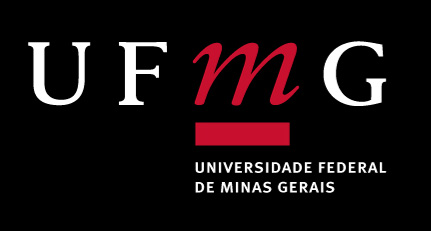Inventário de Emissão de Gases de Efeituo Estufa
uma Análise da Divulgação Voluntária Brasileira no ano de 2014
DOI:
https://doi.org/10.35699/2237-549X..13454Keywords:
Greenhouse Gas Emissions, GGE, GHG Protocol, Voluntary Disclosure IndexAbstract
The greenhouse gas emissions inventories - GHG have been showingn to be an important tool to support the understanding of emission standards and the development of management and mitigation strategies. In Brazil, the Brazilian GHG Protocol Program was launched in 2008 in order to enable the voluntary management of GHG emissions by entities in promoting a platform for the disclosure of inventories. In this way, the present study aims to evaluate quantitatively and qualitatively the inventories published in 2014 by a Voluntary Disclosure Index (VDi), which varies from 0 to 3. The VDi were calculated for the Brazilian states entities in order to verify adherence to the GHG emissions management tool. The study was based on secondary data published in the Brazilian public registry of GHG emissions and on the methodology stipulated by the Brazilian GHG Protocol Program. The index was represented geographically throughout the national territory. The development of the VDi allowed to evaluate the inventories published in 2014, which indicates that the states entities of in the Brazilian southeast region, with greater resources, stood out with higher values of VDi, with an average of 2.36 for Minas Gerais, Rio de Janeiro and São Paulo. Establishing of this methodology may put more pressure on local organizations to join GHG disclosures. Thus, VDi presents itself as a tool with the potential to contribute to the improvement of management and planning of the necessary mitigation actions.
Downloads
References
BUNTAINE, M., PIZER, A., W. Encouraging clean energy investment in developing countries: what role for aid? Climate Policy. 2014.
FGV, WRI Especificações do Programa Brasileiro GHG Protocol: Contabilização, Quantificação e Publicação de Inventários Corporativos de Emissões de Gases de Efeito Estufa, Segunda Edição p.76.
FIGUEIREDO, B., E., PANOSSO, R., A., ROMÃO, R., SCALA JR., L., N. Greenhouse gás emission associated with sugar production in southern Brazil. Carbon Balance and Management. 2010.
HOORNWEG, D., SUGAR, L., GOMEZ, C. L. T. Cities and greenhouse gas emissions: moving forward. Environment & Urbanization. 2011.
IPCC - Intergovernmental Panel on Climate Change. 2006. Disponível em: http://www.ipccnggip.iges.or.jp/EFDB/main.php. Acesso em 11/2016.
IPCC - Intergovernmental Panel on Climate Change. 2006. Disponível em: http://www.ipccnggip.iges.or.jp/EFDB/main.php. Acesso em 11/2016.
KENNEDY, C., S., JULIA, G., BARRIE, H., YVONE, H., TIMOTHY, H., MIROSLAV, P., DIANE, P., AUMNAD, R., ANU, M., V., GARA. Greenhouse Gas Emissions from Global Cities. Environ. Sci. Technology. 2009. 43, 7297-7302.
LARSEN, N. H., HERTWICH, G., E. The case for consumption-based accounting of greenhouse gas emissions to promote local climate action. Environmental Science & Policy. 2009. 791-798.
LOU, X., F., J., NAIR. The impact of landfilling and composting on greenhouse gas emissions – A review. Bioresource Technology. 2009. 3792-3798.
MARCOTULIO, P., J., , S., ANDREA, A., J. S., NIELS, G., JAKE. The geography of global urban greenhouse gas emissions: an exploratory analysis. Climatic Change. 2013. 621-634.
OGLE, M., SP., OLANDER, L., WOLLENBERG, L., ROSENSTOCK, T., TUBIELLO, F., PAUSTIAN, K., BUENDIA, L., NIHART, A., SMITH, PETE. Reducing Greenhouse Gas Emissions And Adapting Agricultural Management for Climate Change in Developing Countries: Providing the Basis for Action. 2013.
PIZER, W., ALDY, J., AKIMOTO, K. Comparing emissions Mitigation Efforts across Countries. Center for Global Development. 2015.
Registro Público de Emissões – RPE (2016) Programa Brasileiro GHG Protocol. Disponível em: https://registropublicodeemissoes.com.br/ acesso em 02/2016.
SMITH P, HARBERL H, POPP A ET AL. (2013) How much landbased greenhouse gas mitigation can be achieved without compromising food security and environmental goals? Global Change Biology, 19, 2285-2302.
WĄTROBA, J. "Simply to Match the Straight or Linear Regression Analysis in Practice." StatSoft Polska (2011): 31-44.
WESTPHAL, I., M., CANFIN, P., BALLESTEROS, A., MORGAN, J. Getting to $100 Billion: climate finance scenarios and projections to 2020. World Resources Institute. 2015.
WRI The Greenhouse Gas Protocol: A Corporate Accounting and Reporting Standard; World Resources Institute and World Business Council for Sustainable Development: Washington, DC, 2004.
Downloads
Published
How to Cite
Issue
Section
License
Copyright (c) 2017 Revista Geografias

This work is licensed under a Creative Commons Attribution 4.0 International License.
Os artigos desta revista obedecem a licença Creative Commons — Attribution 4.0 International — CC BY 4.0









